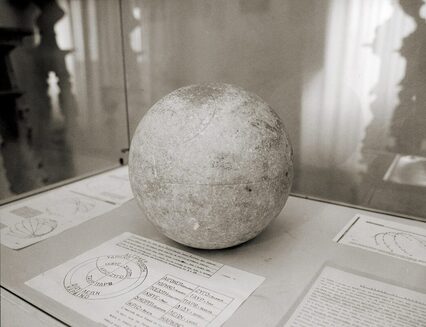Provima (Marche)
The fruit of centuries of viticulture throughout our territory with Picentes origins, the PRO.VI.MA. (Viticultural Producers in Matelica) cellar is the oldest in the upper Vallesina area, in operation for over 80 years. Our origins lie in the histories of the farming families of Matelica who, generation after generation, having bestowed dedication and passion to the cultivation of grapes.
The cellar, a reference point for growers in Matelica, retains its original features, with a “trussed” roof, oak barrels, concrete tanks and stainless steel vats, offering an almost perfect synthesis between tradition and innovation.
For its own brand identity, Pro.Vi.Ma. has turned to the selection of one of the most significant findings in the Matelica territory, “Matelica’s Globe”, an archaeological find of great interest (being a sort of ancient sundial), to emphasize the great civilizations that characterize this territory.
The cellar, a reference point for growers in Matelica, retains its original features, with a “trussed” roof, oak barrels, concrete tanks and stainless steel vats, offering an almost perfect synthesis between tradition and innovation.
For its own brand identity, Pro.Vi.Ma. has turned to the selection of one of the most significant findings in the Matelica territory, “Matelica’s Globe”, an archaeological find of great interest (being a sort of ancient sundial), to emphasize the great civilizations that characterize this territory.
|
The presence of viticulture in the Matelica territory is extremely extensive, dating back more than 2000 years, as evidenced by the discovery of fossil seeds in tombs from the Picentes era.
From the first historical citation of the term “Verdichio” in 1579 through to 1967, the year in which the Verdicchio di Matelica DOC appellation was recognised, the perfect marriage between the vines and the Matelica area has been increasingly consolidated, characterised by its unique terroir. The PRO.VI.MA cellar was founded in 1932, at the behest of the fascist regime, in order to fulfil the so-called obligations of the forced amassing of grapes by the Matelica farmers |
The position of the cellar itself, close to the train station, was chosen to facilitate the transport of grape quantities via rail.
In the past, it was known as the “Enopolio” or “Centrale del Vino di Matelica” (Matelica Wine Centre). It reached its peak in the 1950s and ‘60s when around 40,000 hectoliters of wine were confiscated. From the company archive, we discover that in 1950 a special committee of wine producers was created for the organisation of production and sales, called the “Commissione per la gestione dell’Enopolio” (Commission for Wine Cellar Management).
In the past, it was known as the “Enopolio” or “Centrale del Vino di Matelica” (Matelica Wine Centre). It reached its peak in the 1950s and ‘60s when around 40,000 hectoliters of wine were confiscated. From the company archive, we discover that in 1950 a special committee of wine producers was created for the organisation of production and sales, called the “Commissione per la gestione dell’Enopolio” (Commission for Wine Cellar Management).
|
What sets us apart is the attention given to enhancing the Verdicchio grape, utilising modern technologies whilst respecting tradition, to convey sensory complexity through different wine-making styles. We closely oversee the entire production process, from the vineyard to the bottle, so as to guarantee the best expression of the Verdicchio di Matelica. |
Our vineyards are conducted in accordance with sustainable agriculture. Thanks to the constant liasoning between the agronomist and our growers, we are able to reduce the number of operations in the vineyard to obtain healthy and quality grapes. All of our vineyards are vegetated, as we consider the maintaining of high biodiversity an important element in the preservation of our beloved territory. In the cellar, our work consists in keeping the composition and aromatic heritage of the grapes unaltered, so as to give the wines the capacity to communicate our passion for Verdicchio.
…the fruit of a complexity deriving from the happy combination of infinite details, primarily:
…the fruit of a complexity deriving from the happy combination of infinite details, primarily:
- the characteristic of the Matelica area, a narrow stretch of land between two mountains, with the composition of its terrain varying greatly from sandy and clay-filled for the medium-height hill to the skeletal limestone typical of the taller hill;
- the continental-like microclimate, with cold winters and hot summers, characterised by an elevated temperature range between day and night;
- adaptation over the centuries of the Verdicchio grape and the fortunate intuition of winemakers who appreciate its great and strong personality;
- sensory descriptives that take us back to the yellow acacia flowers, broom, honey and almond, passing to the fruits of yellow peach and apple, through to the spicy aromas of the reserves that elaborate tertiary complexes throughout the two or three years of maturing and ageing;
- the great heterogeneity of the planted area (with the average surface area for each member being 0.5 ha) which becomes an advantage, since it allows the obtainment of a wide range of reference points and to differentiate the productions;
- sustainable management of the vineyards (some having organic agriculture): vegetation, use of pheromone traps, green manure, limited use of pesticides.



